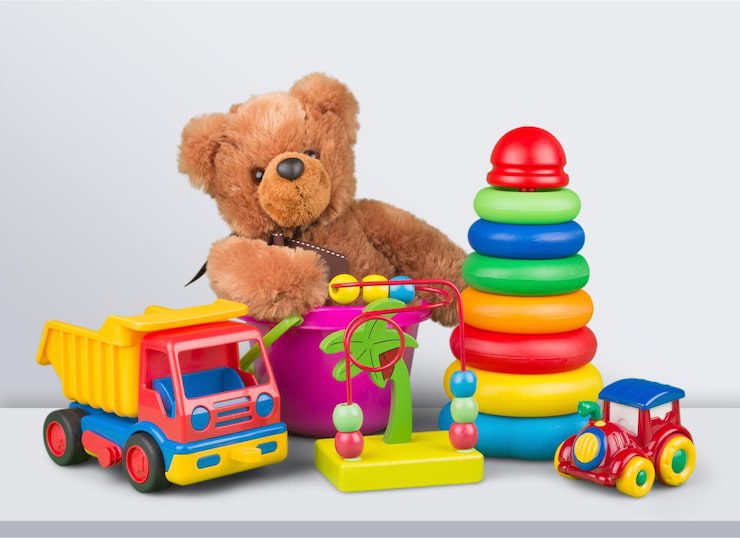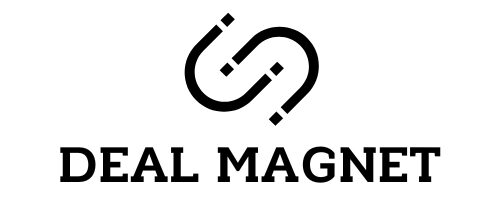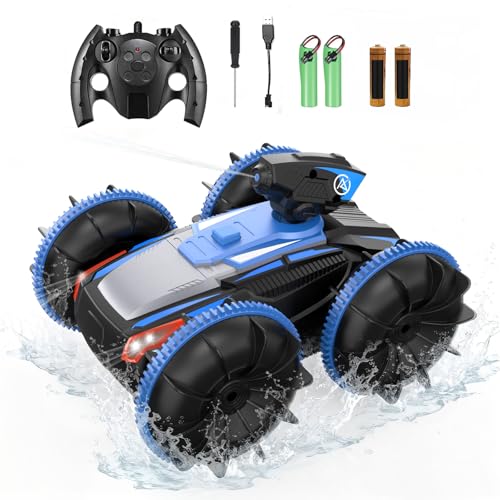“Dealmagnet.uk is a participant in the Amazon EU Associates Programme, an affiliate advertising programme designed to provide a means for sites to earn advertising fees by advertising and linking to Amazon.co.uk.”
Toys are more than just playthings—they’re tools for learning, creativity, and building essential skills. From toddlers discovering shapes to pre-teens diving into science kits or strategy games, choosing the right toys can positively impact a child’s development.
But with so many options in the market, how do you know which toys are safe, age-appropriate, and worth your investment? This comprehensive buying guide for toys (ages 3–12) will help you make smarter choices by breaking down toy categories, highlighting pros and cons, and sharing expert tips and real-life insights.
What to Consider Before Buying Toys for Kids
When shopping for toys, keep these factors in mind:
1. Age Appropriateness
- Toddlers (3–5 years): Focus on motor skills, colors, sounds, and imaginative play.
- Early school years (6–8 years): Learning-based toys, puzzles, beginner science kits.
- Pre-teens (9–12 years): STEM kits, strategy games, advanced creative sets.
2. Safety
- Avoid toys with small parts for kids under 6 (choking hazard).
- Check for non-toxic, BPA-free materials.
- Look for rounded edges and strong build quality.
3. Educational Value
Toys that combine fun with learning have long-term benefits—think problem-solving, teamwork, or creative thinking.
4. Durability
Children play hard! Quality materials ensure toys last longer and can be passed down to siblings.
5. Budget & Value
You don’t need to buy the most expensive toy. Instead, look for ones that provide multiple uses, adaptability across ages, or promote skill-building.
Major Toy Categories for Ages 3–12
Here’s a breakdown of popular toy types, along with pros, cons, and best use cases.
Educational Toys
Examples:
- Alphabet puzzles
- Number blocks
- Science experiment kits
- STEM building sets
Pros:
- Boost critical thinking and problem-solving
- Encourage curiosity and exploration
- Long-term use across age groups
Cons:
- Some require adult supervision
- Can feel “too educational” if not balanced with fun
Best For: Kids ages 5–12 who enjoy exploring, building, or learning new concepts.
Creative & Art Toys
Examples:
- Pottery kits
- Painting and coloring sets
- Craft boxes (beads, clay, origami)
- Music instruments (keyboards, drums, ukuleles)
Pros:
- Encourage imagination and self-expression
- Great for rainy-day indoor play
- Helps develop fine motor skills
Cons:
- Can get messy (paint, glue, glitter!)
- Requires storage space for supplies
Best For: Kids of all ages, especially 6–10-year-olds who love experimenting with crafts.
Outdoor & Sports Toys
Examples:
- Bicycles, scooters, skateboards
- Basketball hoops, soccer goals
- Jump ropes, hula hoops
- Trampolines
Pros:
- Encourage physical activity and healthy habits
- Build coordination and balance
- Great for group play
Cons:
- Require space (yard, park access)
- Safety gear (helmets, pads) adds extra cost
Best For: Active kids from 5–12 who enjoy movement and outdoor fun.
Imaginative & Role-Play Toys
Examples:
- Dollhouses
- Play kitchens
- Action figures
- Dress-up costumes
Pros:
- Enhance storytelling and creativity
- Help kids process real-world situations through role play
- Good for solo or group play
Cons:
- Some sets may come with many small accessories (risk for younger kids)
- Can be expensive for large playsets
Best For: Ages 3–8 who are developing imagination and social skills.
Puzzle & Strategy Games
Examples:
- Jigsaw puzzles
- Board games (chess, checkers, word games)
- Brain teasers and logic games
Pros:
- Promote patience, focus, and problem-solving
- Can be enjoyed by the whole family
- Strengthen memory and strategy skills
Cons:
- Some games are too complex for younger kids
- Missing pieces can ruin the experience
Best For: Ages 6–12, especially families who want screen-free bonding time.

Electronic & Tech Toys
Examples:
- Coding robots
- Learning tablets
- Remote-control cars or drones
- Interactive talking toys
Pros:
- Blend fun with modern tech skills
- Keep kids engaged for longer play sessions
- Some introduce early programming or coding
Cons:
- Higher price range
- Risk of excessive screen time
- Require batteries or charging
Best For: Ages 7–12, especially kids interested in gadgets and technology.
Building & Construction Toys
Examples:
- Building blocks
- Magnetic tiles
- Advanced construction sets (engineering kits)
Pros:
- Boost creativity and spatial awareness
- Allow open-ended play with endless designs
- Improve fine motor skills
Cons:
- Can be pricey for larger kits
- Small pieces = cleanup challenges
Best For: Ages 4–12, adaptable across different difficulty levels.
Comparison Table: Toy Categories at a Glance
| Toy Type | Best Age Group | Benefits | Considerations |
|---|---|---|---|
| Educational | 5–12 | Learning + fun | May need supervision |
| Creative & Art | 3–10 | Imagination, skills | Messy, storage needed |
| Outdoor & Sports | 5–12 | Fitness, teamwork | Safety gear required |
| Imaginative Play | 3–8 | Storytelling, role play | Small parts risk |
| Puzzle & Strategy | 6–12 | Focus, family bonding | Missing pieces issue |
| Electronic & Tech | 7–12 | Coding, gadgets | Pricey, screen time |
| Building & Construction | 4–12 | Creativity, motor skills | Small parts cleanup |
Pros & Cons of Buying Toys for Ages 3–12
Pros
- Wide variety available for every interest
- Many toys promote both fun and education
- Toys support growth in social, emotional, and physical development
Cons
- Can become expensive if buying too often
- Some toys lose novelty quickly
- Parents need to balance between screen-free and tech-based toys
Who It’s Best For
- Parents & Guardians: Looking for safe, developmental toys.
- Gift Buyers: Friends, relatives, and grandparents searching for the perfect present.
- Teachers & Caregivers: Needing educational and engaging group play tools.
FAQs
Q1: How many toys should a child have?
A: Quality matters more than quantity. A few versatile, durable toys are better than clutter.
Q2: Are electronic toys bad for kids?
A: Not necessarily—moderation is key. Tech toys that teach coding or problem-solving can be valuable.
Q3: How do I choose toys that grow with my child?
A: Look for adaptable sets (like building blocks or puzzles) that scale in complexity as the child ages.
Q4: What’s the safest toy material?
A: Non-toxic, BPA-free plastics, natural wood, and food-grade silicone are excellent safe choices.
Real Insights
From personal experience and research:
- Rotating toys keeps kids more engaged than constantly buying new ones. Store half, and swap every few weeks.
- Outdoor toys are worth every penny—they get kids moving and improve health.
- Creative kits (like painting or clay) often turn into family bonding activities.
- STEM toys are highly valued by parents today because they prepare kids for future learning.
Final Recommendation
Choosing toys for kids ages 3–12 doesn’t have to be overwhelming. By focusing on age-appropriateness, safety, and long-term value, you can create a toy collection that balances fun, creativity, and learning.
- For toddlers (3–5): Stick to safe, colorful, motor-skill-focused toys.
- For young children (6–8): Mix educational kits with creative and role-play toys.
- For pre-teens (9–12): Introduce STEM, puzzles, and advanced outdoor or tech toys.
Ultimately, the best toys are the ones that spark joy and curiosity while helping children learn and grow. Choose wisely, and your gift or purchase will create lasting memories.
Latest Articles
- Smart Choices – The Ultimate Everyday Products Buying GuideALLWIN Disco Partylights – Music Control DJ Lights with Remote Control and USB, RGB Party Lights 60 Different Modes Karaoke Family Weddings Children’s Birthdays Kevsuvqin Card Shuffler Machine, 3000mAh Automatic Card Shuffler with USB Charging Cable, Two-deck Card Shuffling Machine, Low Noise Card Shufflers suitable for UNO, Poker, Texas Hold’em and blackjack USB Heated Gloves… Read more: Smart Choices – The Ultimate Everyday Products Buying Guide
- Clear Precision – The Ultimate Buying Guide for Glass ToolsZHJAN 2 Pack 8” Glass Suckers Lifters with Pressure Gauge,220kg Lift Capacity – Heavy Duty Vacuum Suction Cups with Carrying Case for Large Glass, Tile, Granite, Window Replacement “Dealmagnet.uk is a participant in the Amazon EU Associates Programme, an affiliate advertising programme designed to provide a means for sites to earn advertising fees by advertising… Read more: Clear Precision – The Ultimate Buying Guide for Glass Tools
- Spin in Style – The Ultimate Record Player Buying GuideHP-H2501 Retro Bluetooth Vinyl Record Player with Speakers, All-in-ONE Turntable with AT-3600L Cartridge, Belt Drive 2-Speed (33/45 RPM), Best for Music Lovers (HP-H2501) “Dealmagnet.uk is a participant in the Amazon EU Associates Programme, an affiliate advertising programme designed to provide a means for sites to earn advertising fees by advertising and linking to Amazon.co.uk.” In… Read more: Spin in Style – The Ultimate Record Player Buying Guide
- Breathe Easy: Your Complete Dehumidifier Buying GuideAROEVE Dehumidifier 1000ml, Dehumidifiers for Home, Auto Off, Auto Defrost, Peltier Technology, Coloured Light, Portable, Quiet, for Wardrobe, Bedroom, Bathroom “Dealmagnet.uk is a participant in the Amazon EU Associates Programme, an affiliate advertising programme designed to provide a means for sites to earn advertising fees by advertising and linking to Amazon.co.uk.” Humidity may be invisible,… Read more: Breathe Easy: Your Complete Dehumidifier Buying Guide
- Freedom to Clean: Your Ultimate Cordless Vacuum Buying GuideCordless Vacuum Cleaner,Stick Vacuum 45KPA/450W/60min,Wall-mounted Charging/V-shaped Anti-Tangle,with Self-standing Function and Removable Battery,Vacuum Cleaner for Pet Hair,Carpets and Hard Floors Ultenic T10 Lite Robot Vacuum Cleaner with Mop 5000Pa, 15min Lidar Quick Mapping, Self Charging & Emptying, Allergy Friendly, Carpet Auto-boost,Siri/Alexa/APP Remote Control Hoover for Floors Pet Hair Cordless Vacuum Cleaner 48KPa/550W/65min,Stick Vacuum Cleaner with Anti-Tangle… Read more: Freedom to Clean: Your Ultimate Cordless Vacuum Buying Guide
- Smart Choice: The Ultimate Smart Tablet Buying GuideDOOGEE 2025 Newest Android 15 Tablet, Tab E3 Pro 13 Inch Tablet, 32GB+256GB/2TB, Helio G100 Octa-Core Android Tablets, 11000mAh/18W, Large Tablets with SIM Card Slot, 3.5mm Jack/5G WiFi/8+13MP, Gray DOOGEE U11 Android 16 Tablets, Tablet 11 inch Android Tablets with 16GB RAM+128GB ROM+TF 2TB 8580mAh Battery, 90Hz IPS Screen, 13MP+5MP Camera,Wifi Gaming Tablet with Keyboard… Read more: Smart Choice: The Ultimate Smart Tablet Buying Guide
- Data on Demand: The Ultimate Hard Drive Buying Guide
 Aiolo Innovation 500GB Ultra Slim Portable External Hard Drive HDD-USB 3.0 for PC, Mac, Laptop, PS4, Xbox one,Xbox 363-Super Fast Transmission “Dealmagnet.uk is a participant in the Amazon EU Associates Programme, an affiliate advertising programme designed to provide a means for sites to earn advertising fees by advertising and linking to Amazon.co.uk.” In today’s digital… Read more: Data on Demand: The Ultimate Hard Drive Buying Guide
Aiolo Innovation 500GB Ultra Slim Portable External Hard Drive HDD-USB 3.0 for PC, Mac, Laptop, PS4, Xbox one,Xbox 363-Super Fast Transmission “Dealmagnet.uk is a participant in the Amazon EU Associates Programme, an affiliate advertising programme designed to provide a means for sites to earn advertising fees by advertising and linking to Amazon.co.uk.” In today’s digital… Read more: Data on Demand: The Ultimate Hard Drive Buying Guide - Power Up Smartly: Ultimate Charger & Battery Buying Guide
 Battery Charger Compatible with Dewalt 12V/20V Battery, 2-Ports Fast Charger Compatible with Dewalt DCB 203 204 205 206 201 120 127 Lithium Battery “Dealmagnet.uk is a participant in the Amazon EU Associates Programme, an affiliate advertising programme designed to provide a means for sites to earn advertising fees by advertising and linking to Amazon.co.uk.” From… Read more: Power Up Smartly: Ultimate Charger & Battery Buying Guide
Battery Charger Compatible with Dewalt 12V/20V Battery, 2-Ports Fast Charger Compatible with Dewalt DCB 203 204 205 206 201 120 127 Lithium Battery “Dealmagnet.uk is a participant in the Amazon EU Associates Programme, an affiliate advertising programme designed to provide a means for sites to earn advertising fees by advertising and linking to Amazon.co.uk.” From… Read more: Power Up Smartly: Ultimate Charger & Battery Buying Guide - Perfect Finish Every Time: Ultimate Paint Sprayer Buying Guide
 YIREAL Fence Paint Sprayer 800W,Electric Spray Paint Gun with 1300ml Container 3 Meters Cable 1.8M Hose,HVLP Spray Gun with 3 Nozzles 3 Spray Modes for Walls Ceilings Sheds Furniture House Painting “Dealmagnet.uk is a participant in the Amazon EU Associates Programme, an affiliate advertising programme designed to provide a means for sites to earn advertising… Read more: Perfect Finish Every Time: Ultimate Paint Sprayer Buying Guide
YIREAL Fence Paint Sprayer 800W,Electric Spray Paint Gun with 1300ml Container 3 Meters Cable 1.8M Hose,HVLP Spray Gun with 3 Nozzles 3 Spray Modes for Walls Ceilings Sheds Furniture House Painting “Dealmagnet.uk is a participant in the Amazon EU Associates Programme, an affiliate advertising programme designed to provide a means for sites to earn advertising… Read more: Perfect Finish Every Time: Ultimate Paint Sprayer Buying Guide - Sound Without Strings: Buying Guide for Wireless Earbuds & Earphones
 Niderson Wireless Earbuds, Headphones with Screen Stereo Bass, 48Hrs Playtime, Red Niderson Wireless Earbuds, Headphones with Screen Stereo Bass, 48Hrs Playtime, Grey Niderson Open Ear Wireless Earbuds Bluetooth Headphones, Grey Ear Buds for Fitness/Workouts/Travel “Dealmagnet.uk is a participant in the Amazon EU Associates Programme, an affiliate advertising programme designed to provide a means for sites… Read more: Sound Without Strings: Buying Guide for Wireless Earbuds & Earphones
Niderson Wireless Earbuds, Headphones with Screen Stereo Bass, 48Hrs Playtime, Red Niderson Wireless Earbuds, Headphones with Screen Stereo Bass, 48Hrs Playtime, Grey Niderson Open Ear Wireless Earbuds Bluetooth Headphones, Grey Ear Buds for Fitness/Workouts/Travel “Dealmagnet.uk is a participant in the Amazon EU Associates Programme, an affiliate advertising programme designed to provide a means for sites… Read more: Sound Without Strings: Buying Guide for Wireless Earbuds & Earphones - Smart Connections:Buying Guide for Adapters & Extensions
 AUNNO Double Shaver Plug Adaptor UK, 2500W 2 Way Plug Adapter for Bathroom Electric Razor and Electric Toothbrush etc, 2 Pin to 3 Pin Plug Adapter with 10A Fuse AUNNO Pack of 2 UK to European Plug Adapter, UK 3 Pin to European 2 Pin Plug Converter, Euro Type C, E, F and Type G,… Read more: Smart Connections:Buying Guide for Adapters & Extensions
AUNNO Double Shaver Plug Adaptor UK, 2500W 2 Way Plug Adapter for Bathroom Electric Razor and Electric Toothbrush etc, 2 Pin to 3 Pin Plug Adapter with 10A Fuse AUNNO Pack of 2 UK to European Plug Adapter, UK 3 Pin to European 2 Pin Plug Converter, Euro Type C, E, F and Type G,… Read more: Smart Connections:Buying Guide for Adapters & Extensions - Clean Smarter: The Ultimate Vacuum Cleaner Buying Guide
 Ultenic U15 Cordless Vacuum Cleaner 50000Pa/65Min Runtime, Anti-tangle Brush with GreenEye Technology, Self Standing Stick Vacuum, Telescopic Tube, Ideal for All Floors, Carpet & Pet Hair “Dealmagnet.uk is a participant in the Amazon EU Associates Programme, an affiliate advertising programme designed to provide a means for sites to earn advertising fees by advertising and linking… Read more: Clean Smarter: The Ultimate Vacuum Cleaner Buying Guide
Ultenic U15 Cordless Vacuum Cleaner 50000Pa/65Min Runtime, Anti-tangle Brush with GreenEye Technology, Self Standing Stick Vacuum, Telescopic Tube, Ideal for All Floors, Carpet & Pet Hair “Dealmagnet.uk is a participant in the Amazon EU Associates Programme, an affiliate advertising programme designed to provide a means for sites to earn advertising fees by advertising and linking… Read more: Clean Smarter: The Ultimate Vacuum Cleaner Buying Guide - Smart Picks: The Ultimate Smartphone Buying Guide
 DOOGEE Note 56 Mobile Phones, Newest Android 16 Smartphone, 6150mAh, 8.45mm Ultra-Slim, 6.56″ HD+ 90Hz, 24GB + 64GB/2TB Android Phones, Dual SIM Unlocked Mobile Phone, Face ID, GPS, OTG, FM-White DOOGEE Fier 5 Pro Android 15 Rugged Smartphone & Gemini AI – 20GB + 128GB, 13000mAh & MTK Helio G81 Octa Core Rugged Phone,90Hz 6.6″… Read more: Smart Picks: The Ultimate Smartphone Buying Guide
DOOGEE Note 56 Mobile Phones, Newest Android 16 Smartphone, 6150mAh, 8.45mm Ultra-Slim, 6.56″ HD+ 90Hz, 24GB + 64GB/2TB Android Phones, Dual SIM Unlocked Mobile Phone, Face ID, GPS, OTG, FM-White DOOGEE Fier 5 Pro Android 15 Rugged Smartphone & Gemini AI – 20GB + 128GB, 13000mAh & MTK Helio G81 Octa Core Rugged Phone,90Hz 6.6″… Read more: Smart Picks: The Ultimate Smartphone Buying Guide - Brew It Right: Your Coffee Buying Guide
 KOFIKOFI 54mm Bottomless Portafilter, Walnut Handle 3 Ears Naked Portafilter with Puck Screen, Compatible with Sage Breville Barista Series 500-880, Barista Express, and More 54mm Models KOFIKOFI Portafilter 58mm 2 Ears, Compatible with Gaggia Classic Espresso Machines, Naked Bottomless Portafilter with Puck Screen and Filter Basket (Black) KOFIKOFI Bottomless Portafilter 58mm with Puck Screen and… Read more: Brew It Right: Your Coffee Buying Guide
KOFIKOFI 54mm Bottomless Portafilter, Walnut Handle 3 Ears Naked Portafilter with Puck Screen, Compatible with Sage Breville Barista Series 500-880, Barista Express, and More 54mm Models KOFIKOFI Portafilter 58mm 2 Ears, Compatible with Gaggia Classic Espresso Machines, Naked Bottomless Portafilter with Puck Screen and Filter Basket (Black) KOFIKOFI Bottomless Portafilter 58mm with Puck Screen and… Read more: Brew It Right: Your Coffee Buying Guide - Clean Smarter, Not Harder: The Ultimate Vacuum Cleaner Buying Guide
 Ultenic U20 Cordless Vacuum Cleaner 55KPa/60Min,Enhanced Powerful Suction, Upgraded Anti Hair Wrap Brush with Fordable Wand, LED Countdown Display, Self Standing Hoover for Floors, Carpet & Pet Hair “Dealmagnet.uk is a participant in the Amazon EU Associates Programme, an affiliate advertising programme designed to provide a means for sites to earn advertising fees by advertising… Read more: Clean Smarter, Not Harder: The Ultimate Vacuum Cleaner Buying Guide
Ultenic U20 Cordless Vacuum Cleaner 55KPa/60Min,Enhanced Powerful Suction, Upgraded Anti Hair Wrap Brush with Fordable Wand, LED Countdown Display, Self Standing Hoover for Floors, Carpet & Pet Hair “Dealmagnet.uk is a participant in the Amazon EU Associates Programme, an affiliate advertising programme designed to provide a means for sites to earn advertising fees by advertising… Read more: Clean Smarter, Not Harder: The Ultimate Vacuum Cleaner Buying Guide














